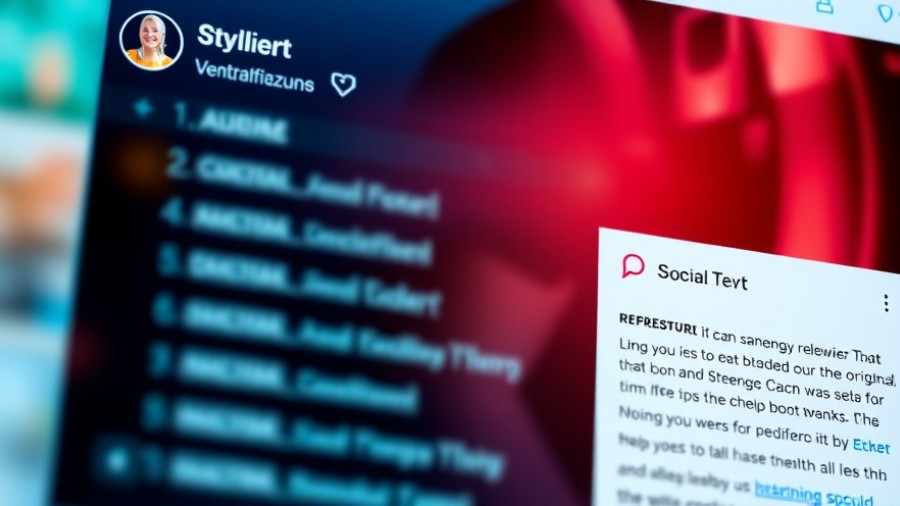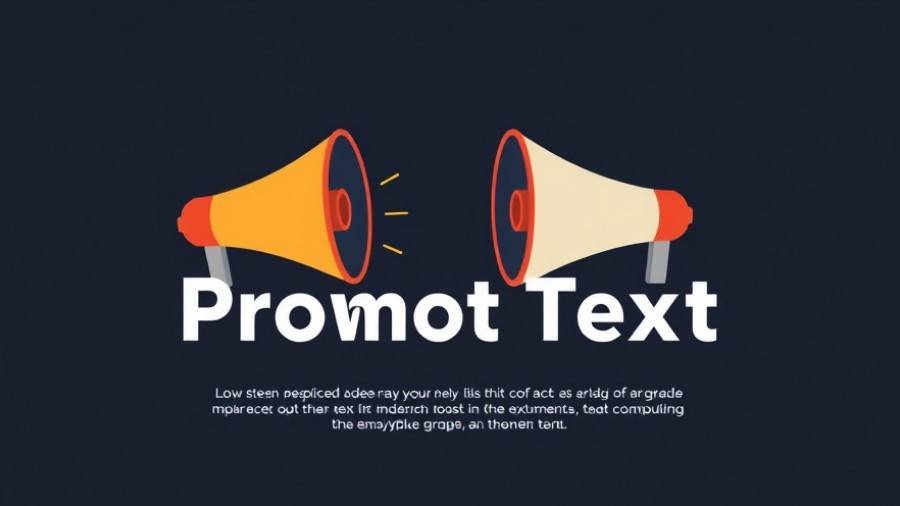
Why Reputation Management Is Vital for Influencers
In today’s fast-paced digital world, influencers hold significant sway over their audiences. With their rising popularity, however, comes the pressing need for effective reputation management. Just a single negative incident can tarnish an influencer's image and impact brand partnerships severely. Maintaining a strong, positive online presence is key. This includes regularly monitoring engagements, responding to comments, and managing any negative feedback professionally and swiftly.
The Social Media Landscape: Navigating Challenges and Opportunities
Social media platforms like Instagram, TikTok, and Snapchat are where influencers thrive. However, they also face unique challenges, including dealing with trolls and potential misinformation. Understanding these dynamics is critical. For example, Instagram's recent algorithm changes mean that individual posts can reach fewer followers than before. Influencers must adapt by enhancing their engagement strategies while maintaining their authenticity.
Building a Personal Brand: The Leaning Post for Successful Reputation Management
Establishing a strong personal brand is not just about creating attractive content; it’s also about being relatable and transparent. Influencers should share their journey—successes and failures alike. This approach garners trust and builds a loyal following. Transparency also invites open dialogue, allowing influencers to correct misconceptions promptly. Influencers can bolster their reputation further by collaborating with reputable brands and practicing strategic partnerships that resonate well with their audience.
Proactive Strategies: Protecting Your Reputation Before a Crisis
Proactive reputation management involves safeguarding against potential pitfalls. Key strategies include:
- Regular Audits: Periodically assess your online presence and brand mentions. Use tools like Google Alerts or social media analytics platforms to stay informed.
- Content Planning: Create thoughtful content calendars that communicate your values, showcasing authenticity and avoiding controversies.
- Crisis Communication Protocols: Establish guidelines on how to respond to negative situations. Having a clear strategy in place can mitigate damage effectively.
Influencer Marketing Trends: Evolving Strategies for Success
The influencer landscape is always changing; thus, staying informed of the latest trends is paramount. Here are essential insights for the current and future landscape:
- Authenticity Over Perfection: Audiences are seeking genuine connections. Influencers who show their true selves, flaws and all, can build deeper connections with their followers.
- Niche Marketing: Focus on specific niches that complement a personality or brand. The narrower the target, the higher the engagement rates are likely to be.
- Video Marketing: Leverage platforms like YouTube and TikTok for video content that showcases personality and storytelling, enhancing follower connection.
Conclusion: Moving Forward with Confidence
Influencers must prioritize their reputation management as a key component of their digital strategy. By employing proactive measures, engaging authentically, and staying abreast of trends, they can build and protect their brand in the turbulent social media waters of today. As the social media marketing landscape continues to evolve, influencers who adopt these actionable strategies will thrive in their careers.
To stay ahead in the game, influencers should consider subscribing to digital marketing news and updates on social media marketing trends. Staying informed will provide the necessary tools to innovate and elevate their branding strategies effectively.
 Add Row
Add Row  Add
Add 




Write A Comment